
Kate McCullough
BA (Ayurveda Wellness and Integrative Health)
Note — The article was checked and updated November 2023.
Ayurveda is a comprehensive, natural, and complete health system that can be used to treat many common health conditions such as
- Gastrointestinal health
- Mental health and neurological disorders
- Female and male health
- Cardiovascular and respiratory health
- Skin diseases
Ayurveda takes a holistic approach focusing on the mind, body and spirit and uses specialized diets, lifestyle routines, detoxification, herbs and meditation as means of treatment.
Ayurveda is an individualized healthcare system that is based on each person’s unique mind-body type and current imbalances, some of which we have covered in this article.
A quick guide to Doshas
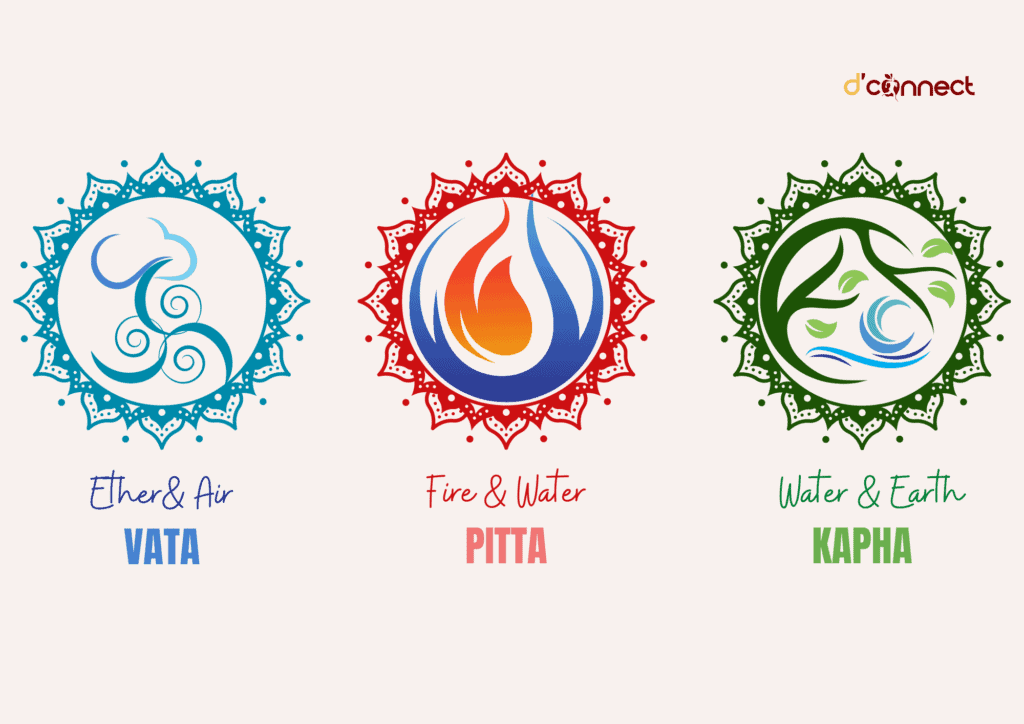
There are three Ayurvedic doshas that are, according to the traditional vedic texts, seen as the root cause of all health conditions.
VATA: Ayurvedic dosha representing Air
PITTA: Ayurvedic dosha representing Fire
KAPHA: Ayurvedic dosha representing earth
Vata is said to be the root cause of 80 different diseases, Pitta of 40 and Kapha of 20.
RELATED — Introduction to Ayurveda: Ancient medicinal healing methods
Cardiovascular health
Blood pressure
Blood pressure is the force of circulating blood in the blood vessels. It can be too high (hypertension) or too low (hypotension).
Hypertension is more common and more serious as it makes the heart work harder and faster due to the increased blood flow. The main causes of hypertension are
- Improper diet
- Lifestyle
- Excess weight
- Smoking
- Stress[1]
According to Ayurveda, hypertension is not a disease, but an early symptom of one or more of the three doshas moving out of their locations.[1]
Lifestyle and diet changes as well as losing excess weight and reducing stress are the first steps in Ayurveda to addressing hypertension.[2] Alongside lifestyle changes, amla (Emblica officinalis) is one of the most effective herbs for reducing blood pressure.[3]
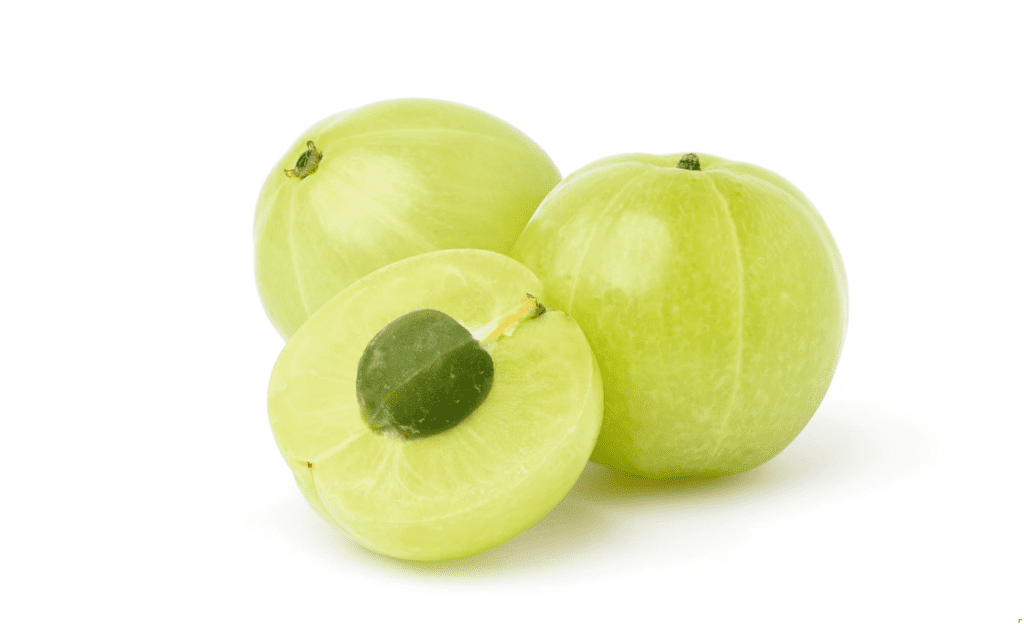
Varicose veins
Varicose veins are enlarged, twisted veins that commonly show up on the legs. While they are not a serious condition, they can result in complications, leading to greater problems.
In Ayurveda, varicose veins are mostly considered a Vata disorder caused by poor circulation. Pitta is also involved since there is a disruption in the blood and blood vessels.[4]
RELATED — Vata imbalance: Are you always worried, anxious and cold?
Not many scientific studies have been done on the effectiveness of Ayurveda treatment for varicose veins, however some useful herbs to use are
- Gotu kola (to stimulate the production of elastin and collagen)
- Manjistha (strong anti-inflammatory properties to reduce swelling of the veins).[5]
Gastrointestinal health
Crohn's disease and Ulcerative colitis
Ayurveda conjoins Crohn’s disease and ulcerative colitis under the same classification with the same symptoms
- Ulceration in the small intestine/duodenum
- Diarrhea
- Abdominal pain and discomfort
Crohn’s disease and ulcerative colitis both have the same pathological cause and psychological disturbances such as grief, fear and anxiety, therefore require the same treatment.[6]
These diseases are caused by Vata becoming extremely aggravated, pushing Pitta (heat) into the colon, causing inflammation.[6] Healing from Crohn’s disease and ulcerative colitis is possible, but it will require
- Change in diet to Pitta-Vata pacifying foods
- Meditation and stress reduction
- Herbal formulas to help cleanse and heal the gut flora.[6]
Gastritis
Gastritis is known as inflammation of the stomach lining and is caused by an aggravation of the Pitta dosha.[7]
Pitta aggravating factors that could cause gastritis include
- Excessive alcohol
- Caffeine
- Smoking
- Excess spicy/sour/salty foods
- Anger
- Stress
The aggravated Pitta causes improper digestion and increases the heat in the stomach, causing inflammation and excess gas.[8]
RELATED — Pitta imbalance: Are you easily irritated and prone to skin rashes or heartburn?
Ayurvedic treatment of gastritis is to pacify Pitta through eating a Pitta pacifying diet and taking cooling herbs such as aloe vera, amalaki, fennel, and coriander to name a few.[8]
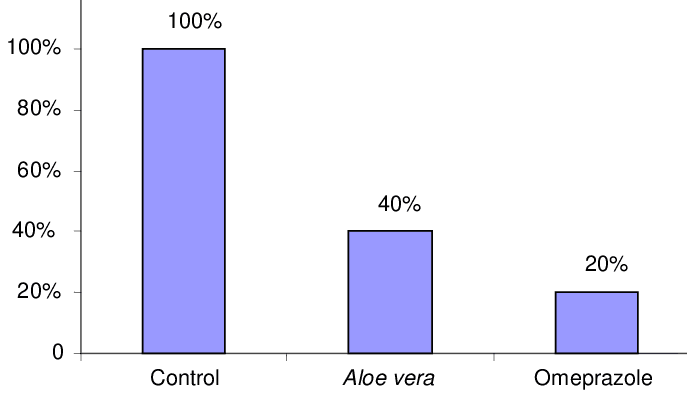
Source: Lagisetty, R., Anti-ulcer effect of Aloe vera in non-steroidal anti- inflammatory drug induced peptic ulcers in rats (African Journal of Pharmacy and Pharmacology, 2011)
Working on reducing stress and tension are also helpful in treating gastritis.[8]
Irritable bowel syndrome (IBS)
Irritable bowel syndrome is seen as weak or improper digestion which leads to the accumulation of ama (toxins) causing IBS symptoms.[9]
The cause of IBS is normally from a poor diet, eating too much or too little, eating while distracted, and stress related emotions.[9]
The treatment of IBS is the reduction of ama through proper diet and eating routines and stress reducing practices. The treatment will depend on the type of IBS (IBS-C or IBS-D), but some herbs that can help in either case are aloe-vera, cumin, ginger, peppermint and triphala.[9]
Mental health and neurological disorders
Anxiety
Anxiety is becoming a widespread issue in today’s world and is commonly linked with insomnia and feelings of fear.
RELATED — Increase in Anxiety: Are we “The Anxious Generation”
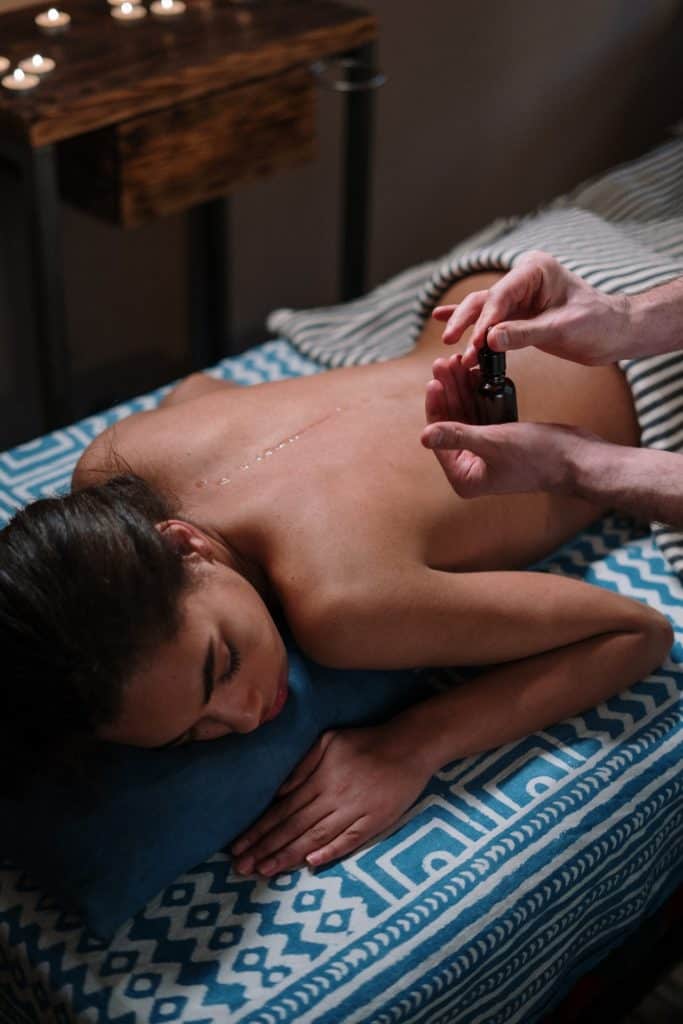
In Ayurveda, anxiety is viewed as a Vata disorder in the nervous system. To heal anxiety, we need to balance and ground the Vata dosha through diet, lifestyle and specific herbs.[1]
Massage can help decrease anxiety, alongside yoga and meditation which are also both very calming to the mind.[10]
Herbs that can help with anxiety are ashwagandha, gotu kola and brahmi.[10]
Abhyanga (oil massage) can be incredibly calming to the nervous system
Bell's palsy
Bell’s Palsy is a condition that temporarily causes paralysis to the facial nerve causing one side of the face to have a droopy appearance. Bell Palsy usually resolves itself within 6 months.
Bell’s Palsy is known as Adrita Vata in the classical text and is a Vata disorder caused by
- Excessive use of the facial nerve from speaking loudly / at a higher pitch for a long period of time
- Excessive laughing / yawning
- Injury to the facial muscles
- Improper posture[11]
Ayurveda treatment includes balancing the Vata dosha through diet and lifestyle choices, and taking Vata pacifying herbs like ashwagandha, brahmi, curcumin, and nirgundi oil for massaging on the face.[11]
RELATED — Turmeric (Curcuma longa)
Depression
Depression is a complex issue with many different root causes. While depression is seen as a Kapha disorder, it can also be caused by a Pitta and Vata imbalance.[12]
RELATED — Introduction to: Depression
People with depression can have varying symptoms, so knowing the root cause of the individual’s depression is key to getting the right treatment.
To treat depression we need to
- Bring the imbalanced dosha back into balance
- Eliminate ama
- Reharmonize with nature’s cycles
- Balance the mind through enlivening one’s awareness
- Connection to their true-self[12]
Creating a daily routine with more regularity and purpose can also help calm and bring peace to the mind.
Insomnia and quality of sleep
Insomnia is known as the inability to fall asleep or stay asleep. It can be caused by an array of factors, but according to Ayurveda it is most commonly caused by a Vata aggravation.
Treatment involves calming and balancing Vata through eating regular warm and nourishing meals (eating enough is key to having a good night sleep), abhyanga, yoga and meditation to relax the mind and body.[1]
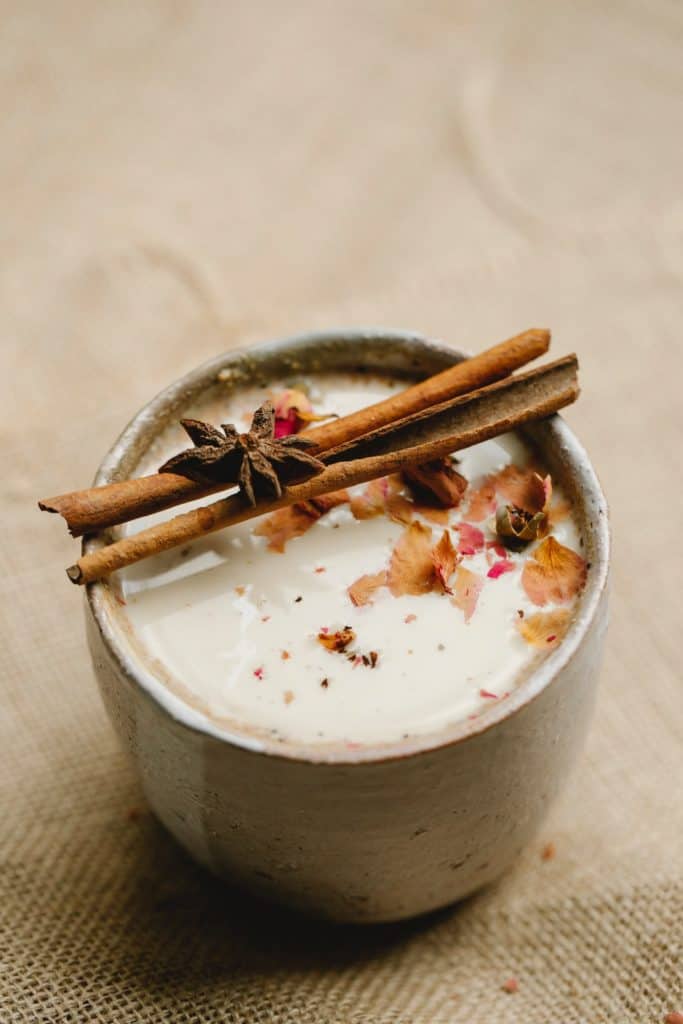
Having a regular sleep schedule is helpful in treating insomnia
Having warm milk with cinnamon, cardamom and ginger before bed is a classic Ayurvedic insomnia remedy that can be great at settling the mind and body.[13]
Migraines and headaches
Headaches and migraines are another complex issue that can have many root causes and be grouped into different categories
- Sinus headache
- Tension headache
- Cluster headache
- Migraine headache
Simple remedies that should benefit all types of headaches are
- Reducing stress
- Eating a nourishing diet (not skipping meals)
- Meditation
- Abhyanga (oil massage)
- Good quality sleep between 10pm-6am
- Daily movement (walking or yoga)[14]
Parkinson's disease
Parkinson’s disease is a neurological condition that can cause tremors, poor stability, restless sleep, dizziness, and difficulty with speech and writing.[15] It most commonly affects people over 65.
Ayurveda sees Parkinson’s as a Vata disorder, where Vata has moved out of its location and relocated itself into a weak tissue, such as the brain, causing altered coordination and tremors.[15]
Treatment for Parkinson’s disease is focused on balancing the Vata dosha and bringing it back into its home. This includes practices like abhyanga (oil massage), basti (oil enemas), and taking ashwagandha along with a combination of other herbs and oils that balance the Vata dosha.[15]
Stress reduction
Stress is becoming an inevitable factor in today’s modern world. While the body can handle short bursts of unavoidable stress, the ongoing stress most people are experiencing is starting to have detrimental effects on our health.
RELATED — Understanding Stress: The Silent Killer
Depending on what dosha is out of balance will depend on what our stress response is.
Vata stress is shown as anxiety, fear and worry.
Pitta’s stress is shown as anger and frustration.
Kapha’s stress is shown as depression and fatigue.[16]
The key to stress reduction are mindfulness practices like meditation, yoga, calming music, spending time in nature and increasing our body’s stress resilience through proper diet and lifestyle practices.
Stroke prevention and recovery
A stroke occurs when a blood vessel in the brain ruptures, or when there is a blockage in the blood supply to the brain, preventing oxygen and blood from reaching the brain tissue.[17]
There are two types of strokes
- Ischemic stroke
- Hemorrhagic stroke
According to Ayurveda, a stroke is caused by an aggravation of the Vata dosha resulting in paralysis on one side of the body. Therefore, the prevention of a stroke would be to keep the Vata dosha balanced through diet and lifestyle choices.
The recovery from a stroke depends on the size and location of the stroke and should be done in a hospital where specific Ayurvedic treatments can be carried out by trained professionals.[17]
Musculoskeletal health
Arthritis
Arthritis is inflammation of the joints causing pain and stiffness, which generally worsens with age.
Ayurveda views arthritis as beginning in the colon from improper diet or lifestyle choices, resulting in the accumulation of ama. Ama is a toxic by-product from inadequate digestion that can lodge into the bone tissue causing arthritis.[1]
The aim of treating arthritis is removing the ama. The best and most effective method would be panchakarma or seasonal cleanses, but some simpler methods to do at home can be taking herbs like triphala to start gently cleansing the colon.[1]
Cervical spondylosis
Cervical spondylosis is like a type of arthritis, but in the spine and is caused by wear and tear of the spinal discs in the neck.
While cervical spondylosis is generally considered an age-related condition, it is becoming more of a lifestyle related condition with the increase of people hunched over a desk creating bad posture.
RELATED — Bad posture can impact your health: Getting it straight
In Ayurveda, this condition is caused by a Vata aggravation from a Vata aggravating diet and lifestyle. Balancing Vata through
- Diet and lifestyle choices
- Daily massages with sesame oil
- Gentle daily movement
- Stretching
should help ease the symptoms.[18]
Osteoporosis
Osteoporosis is a condition which causes thinning alongside an increase of porosity in the bones. Ayurveda sees osteoporosis as a condition caused by increased Vata, which results in decreased bone tissue.[1]
Women are more prone to osteoporosis
Especially after menopause due to the amount of bone lost from the decrease in estrogen.[1]
Gentle exercise such as walking and ensuring a plentiful intake of dietary calcium from cow, goat or sheep’s milk, cheese, carrots and sesame seeds can help with osteoporosis.[1]
RELATED — Calcium (for healthy bones, teeth and heart)
Herbalised basti (enemas) and daily abhyanga (oil massage) with sesame oil are also great ways for balancing Vata and increasing bone health.[19]
Sciatica
Sciatica is pain caused by the inflammation or irritation of the sciatic nerve, causing pain down one or both legs, which starts at the lower back.
Sciatica is generally considered a Vata imbalance along with an impaired digestive system resulting in the accumulation of toxins in minute channels of the body.[20]
Ayurvedic treatment for sciatica is cleansing herbs to eliminate the ama, followed by digestive herbs and a Vata balancing diet to restore the gut flora.[21] Other treatments like herbalised basti (enema), and abhyanga (oil massage) can help with decreasing Vata and in eliminating ama.
Respiratory health
Asthma
Asthma is a chronic inflammatory disease of the airways. In Ayurveda, asthma is commonly caused by an increase of Kapha in the stomach, which then moves into the lungs and obstructs the movement of Vata (air).[22]
While Ayurveda agrees that environmental factors can contribute to asthma, it puts more emphasis on lifestyle and dietary factors as the causes.
The treatment of asthma in Ayurveda is taken seriously as asthma is seen as a life-threatening disease.[22]
Common treatments include
- Decreasing and eliminating excess Kapha in the body through diet
- Lifestyle
- Herbs
- Avoiding exposure to the cold and other environmental irritants.[22]
RELATED — Natural remedies: For our respiratory health (sinuses, throat and lungs)
Sinusitis
Sinusitis is inflammation in the nasal cavity from a buildup of fluid and germs leading to an infection. In Ayurveda, sinusitis is seen as a Kapha and Vata imbalance.[23]
A study done on the effectiveness of Ayurvedic medicine in the treatment of sinusitis over a 45-90 day period for 33 patients had an overall clinical efficiency of 96.6%.[24]

The main methods of treatment were specific herbal recommendations, steam distillations, application of nasya oil, and removing difficult to digest foods like rice, curd and bananas temporarily from the diet.[24]
Skin and epidermis health
Acne
Acne is a skin condition where there is an excess production of oil from the sebum glands that blocks the pores, resulting in blackheads, whiteheads or pimples.
In Ayurveda, acne is seen as an aggravation of Pitta that moves under the skin, causing a break out in pimples. Pitta aggravation leading to acne can be caused by
- Eating too much processed, oily, salty or sour foods
- Hormonal imbalances
- Excess exposure to the sun or stress[1]
Some useful remedies for healing acne would be to follow a Pitta pacifying diet, a cumin-coriander-fennel seed tea (½ tsp each), drinking pure aloe vera juice, and taking amalaki or triphala before bed to clear excess Pitta out of the colon.[1]
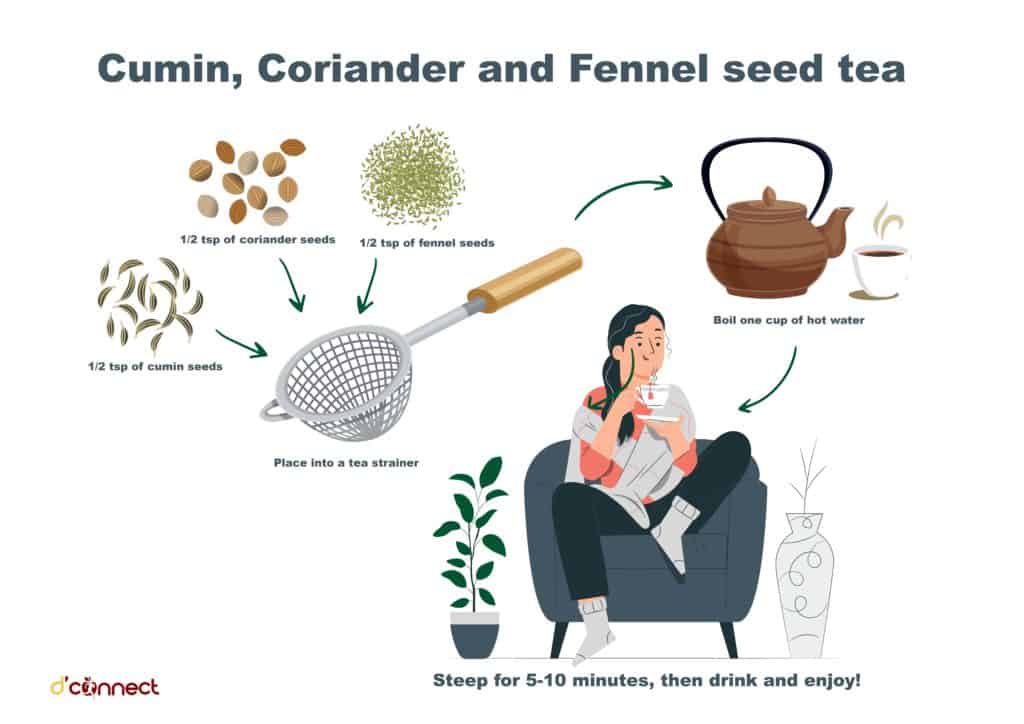
Cellulitis
Cellulitis is a bacterial infection of the skin, mostly caused by Staphylococcus and Streptococcus bacteria. Cellulitis can appear anywhere on the body and can spread rapidly into deeper tissues, so it’s important to get it treated.[25]
The shoulder is one of the most complex joints in the human body
An aggravation of Pitta is normally associated with cellulitis, so following a Pitta-pacifying diet (foods/spices such as rocket, coconut, turmeric, aloe vera) and lifestyle choices to reduce Pitta can help make the body inhospitable for the bacteria.[26]
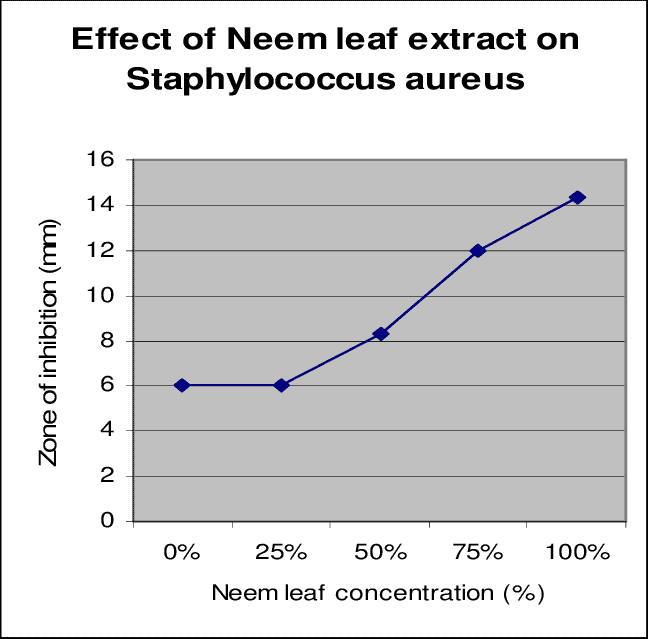
Triphala powder can also be used to clean the wounds.[25]
Eczema
Eczema is a non-contagious skin condition resulting in itchy, red, dry and inflamed skin. There are a variety of different types of eczema which will all have different symptoms and require varying treatments.
The most common treatment for eczema in Ayurveda is to cleanse out the excess doshas through drinking medicated ghee for 5-7 days to remove toxins from the body.[27]
Then, certain purgative practices are done to eliminate those toxins from the body, which helps improve the body’s immune system.[27]
A simple Pitta-pacifying diet is suggested after the cleansing, to cool down the excess Pitta.
Ayurvedic herbs that can help with skin diseases are
- Neem
- Manjistha
- Triphala
- Cardamom
- Turmeric[28]
Fungal infections
Fungal infections are infections of the skin that are contagious and are generally caused by damp, warm weather.
Fungal infections are seen as an increase of the Pitta and Kapha doshas, so eating a diet to pacify those doshas will be helpful.[29]
Avoiding heavy processed foods, sour or salty foods and excessive consumption of food in general, can help balance these doshas.
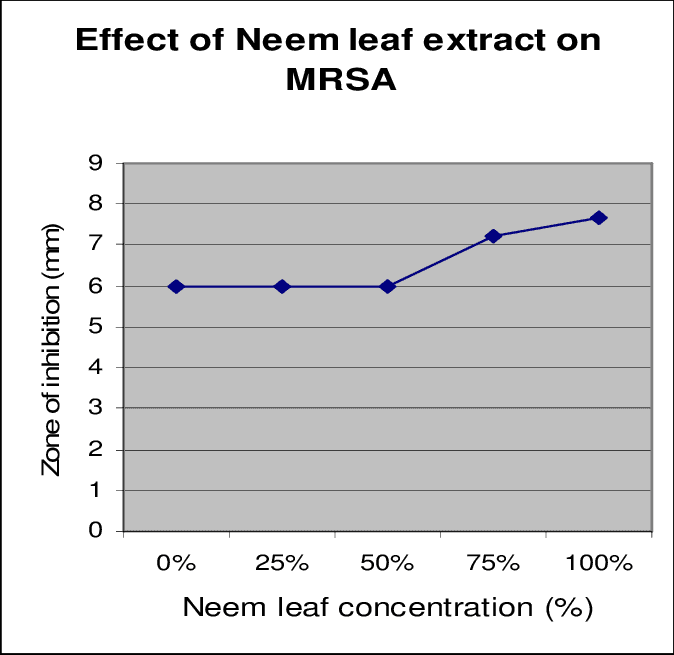
Neem oil is a remedy that has been used in Ayurveda for centuries due to its antibiotic and anti-inflammatory actions. Neem powder can also be taken internally to help fungal infections.[30]
Psoriasis
Psoriasis is a chronic inflammatory skin disease that is classified as an autoimmune condition.
Psoriasis occurs when a person’s immune system is not functioning properly and sends wrong signals to the skin cells telling them to grow too quickly, resulting in skin cells growing 10 times quicker than normal.[31]
While there is no cure for psoriasis, symptoms can be managed and prevented through Ayurveda.
Ayurveda suggests eating a wholesome diet, and reducing stress through yoga and meditation. It is important to avoid smoking, excess alcohol, and sour, salty and spicy foods.[32]
Female health and related conditions
Infertility
Causes of infertility in women can be from an array of factors such as blocked fallopian tubes, ovarian factors, uterine disorders, PCOS and endometriosis.[33]
Ayurveda can be a great tool for healing infertility as it takes a holistic approach, looking at all aspects of a woman’s life to help regulate her hormones and menstrual cycle.
Eating more nourishing foods like ghee, milk, almonds, rice and dates can help with regulating the menstrual cycle and improving fertility.[34]
Certain herbs like ashwagandha, shatavari and amalaki can help balance the LH and FSH hormones needed for conception.[34]
Menopause related issues
Menopause is a normal transition as a woman ends her reproductive years, and undergoes many biological and physiological changes. The symptoms, however, that commonly come with menopause do not have to become the new normal.[35]
RELATED — Menopause Revealed: Signs, Stages, Types and Treatment
Menopause is normally caused by a Vata and Pitta imbalance and therefore following a Vata-Pitta pacifying diet, which emphasizes on warm and nourishing foods can be an effective treatment for reducing symptoms.[1]
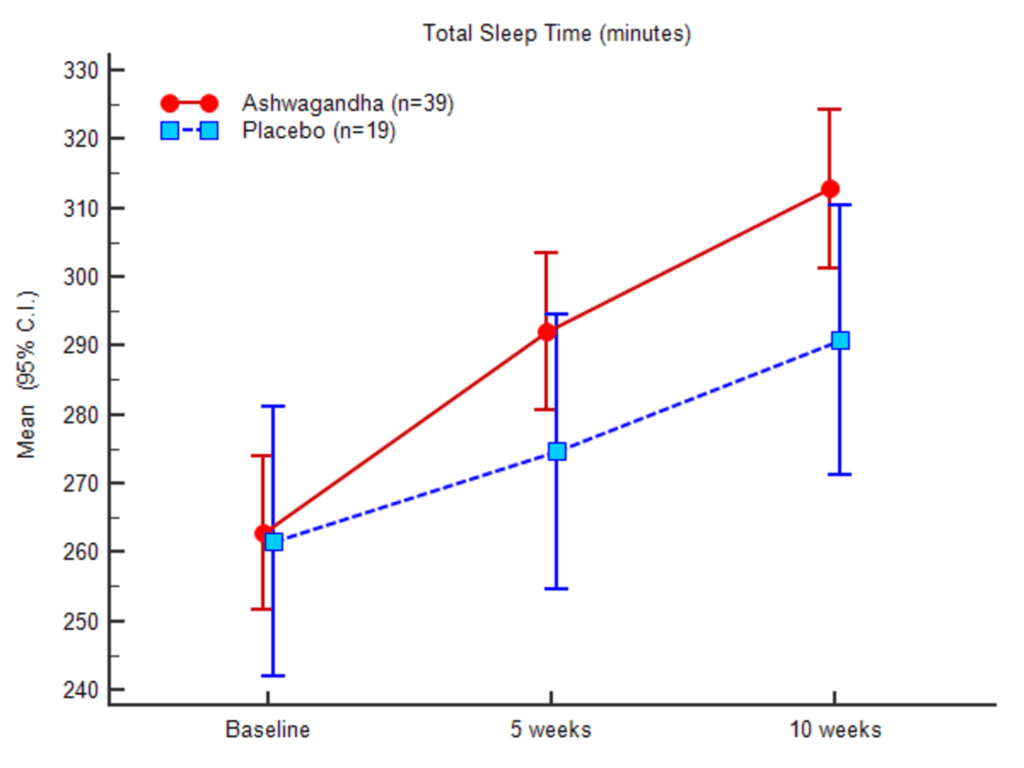
Ashwagandha and ashokarishta formula are two effective herbal medicines that have shown to help decrease menopausal symptoms including psychological disturbances that are commonly seen with menopause.[35]
Menstrual related issues
Menstrual related issues can be caused by a Vata, Pitta or Kapha imbalance, so it’s important to know what dosha is at the root cause to treat it effectively.
Eating a nourishing diet according to one's mind-body type can prevent menstrual related issues
Taking aloe vera gel/juice 3 times a day before menstruation starts can also help prevent all types of menstrual pains.[1]
Manjistha is a great herb that can help with menstrual problems such as pain, heavy bleeding and irregular periods as it is a rejuvenating herb that helps to purify and cleanse the blood.[36]
Polycystic ovary syndrome (PCOS)
PCOS is the most common endocrinopathy in women and is a condition where cysts form on the ovaries, affecting ovulation and menstruation regularity.[37]
According to Ayurveda, PCOS is caused by an obstruction in the pelvic cavity, impairing the flow of Vata and resulting in a build-up of Pitta and Kapha.[37]
Treatment of PCOS includes clearing the obstruction through purification methods and using lifestyle and nutrition to regulate menstruation.[37]
Endometriosis
Endometriosis is an abnormal growth of endometrial cells outside of the uterus.
The most common symptoms of endometriosis is pelvic pain, painful periods, heavy periods, pain during intercourse, miscarriages and infertility in 30-40% of woman.[38]
Ayurveda sees endometriosis as a chronic disease with the root cause being an accumulation of ama (toxins) that then starts to build up and create blockages.[38]
The first step to treating endometriosis is stopping the accumulation of ama through improving digestion, eating a nourishing diet, balancing the mind (yoga, meditation or counseling) followed by Ayurvedic detoxification practices, such as panchakarma.
Male health and related conditions
Erectile dysfunction
Erectile dysfunction is a sexual disorder caused by the inability to maintain or withhold an erection during intercourse.
Erectile dysfunction can also be caused by heart disease, as well as psychological imbalances such as anxiety, depression and stress.[39]
Erectile dysfunction is not considered a disease in Ayurveda, and with the right diet, lifestyle and herbs it can be easily remedied.[39]
Some popular Ayurvedic herbs for erectile dysfunction are ashwagandha, shatavari and tulsi. These herbs are rejuvenating and help to nourish the shukra dhatu (reproductive tissues).[39]
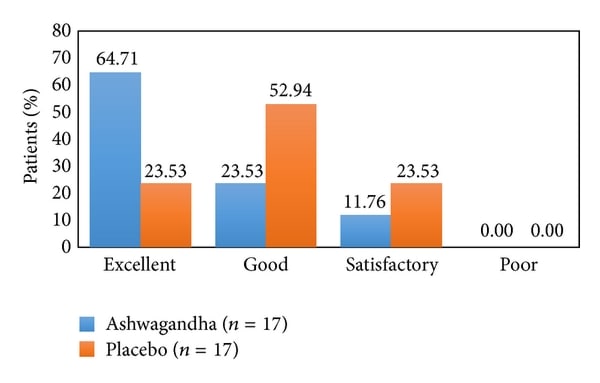
Prostate health
There are three conditions that can affect the prostate gland
- Prostatitis (inflammation of the prostate)
- Benign prostatic hyperplasia (enlargement of the prostate)
- Prostate cancer (can be life threatening)[40]
Prostate health is very important for men, especially over the age of 65.
Prostate cancer is the second leading cause of death by cancer in men
While 80% of those cases were in men over 65, these imbalances start occurring much earlier in life.
RELATED — Prostate Cancer: All you need to know and are afraid to ask
Some common reasons for prostate problems is over use of the sexual organs, lack of fluid intake, excessive consumption of caffeine and alcohol, and ama (toxins from poor diet and lifestyle habits).[41]
Some ways to improve prostate health are to
- Drink plenty of fluids
- Urinate when the urge rises
- Take triphala to keep the bowels moving
- Eat a wholesome diet
- Regular sleep.[41]
Related Questions
1. Can you eat meat in Ayurveda?
Ayurveda is not purely vegetarian or vegan, and does favor meat in certain cases for certain conditions. This is because meat is seen as the most nourishing form of food.
The most common imbalances where meat is suggested is for Vata imbalances due to Vata being light, dry and cold and meat being heavy and nourishing.[42]
RELATED —The Vegan Diet and Lifestyle: Benefits, Risks and Meal Plans
2. What is the treatment for white tongue in Ayurveda?
Following a Kapha-pacifying diet and improving digestion should help.
3.Which ayurvedic oil is best for blood circulation?
Poor blood circulation is generally a Vata condition and the best oil for calming and warming Vata is sesame oil. Daily abhyanga (oil massage) using herbal infused sesame oil is best for improving blood circulation.
Are you currently dealing with a certain health condition and are looking at using a natural treatment to get better? If so, let us know in the comment section below how your journey to health is coming along.
Kate is currently studying for a Bachelors in Ayurveda from the Maharishi International University. Her passion for holistic and alternative health modalities started when she was 18 and already experiencing an array of health issues that the doctors had no answers for. This led Kate down the path of studying the ancient knowledge of Ayurveda to regain her health and vitality again.
Kate’s focus is on gut and mental health, sleep, and exercise where through pulse readings, diet, daily routines, seasonal cleansings, yoga, and meditation we can create a balance.
Kate is a part of the Content Team that brings you the latest research at D’Connect.
References
(1) Lad, V. (2006). The Complete Book of Ayurvedic Home Remedies: A Comprehensive Guide to the Ancient Healing of India (New Ed). Piatkus.
(2) Menon, M., & Shukla, A. (2017, November). Understanding hypertension in the light of Ayurveda. Journal of Ayurveda and Integrative Medicine, 9(4), 5. 10.1016/j.jaim.2017.10.004 https://www.ncbi.nlm.nih.gov/pmc/articles/PMC6314241/
(3) Gopa, B., Bhatt, J., & Hemavathi, K. (2021). A comparative clinical study of hypolipidemic efficacy of Amla (Emblica officinalis) with 3-hydroxy-3-methylglutaryl-coenzyme-A reductase inhibitor simvastatin. Indian Journal of Pharmacology, 44(2), 5. 10.4103/0253-7613.93857
(4) Manohar, V. (n.d.). Ask the Expert: Varicose Veins | Maharishi AyurVeda. Maharishi Ayurveda. Retrieved May 1, 2022, from https://mapi.com/blogs/articles/ask-the-expert-varicose-veins
(5) Bansal, P. (2021, August 17). 5 Ayurvedic Herbs To Treat Condition Of Varicose Veins – 5 Ayurvedic Herbs To Treat Condition Of Varicose Veins. Onlymyhealth. Retrieved May 1, 2022, from https://www.onlymyhealth.com/ayurvedic-herbs-to-treat-varicose-veins-1629201185
(6) Murthy, K. S. (2016, November 1). Using Ayurvedic Practices in the Treatment of Crohn’s Disease An Eastern Practice in the Western World By: Jocelyn Segal-Townsend. California College of Ayurveda. Retrieved May 1, 2022, from https://www.ayurvedacollege.com/blog/crohns-disease/
(7) KUMAR, R. (n.d.). Complete Gastritis Treatment at Elite Ayurveda®. Elite Ayurveda. Retrieved May 1, 2022, from https://eliteayurveda.com/diseases/gastroenteric/gastritis/
(8) Hebbar, J. (2013, September 26). Fruitful Ayurvedic Remedies For Gastritis – Amlapitta. Easy Ayurveda. Retrieved May 1, 2022, from https://www.easyayurveda.com/2013/09/26/fruitful-ayurvedic-remedies-for-gastritis/
(9) Sharma, B. (2021, August 18). A Complete Guide to Ayurvedic treatment of Irritable Bowel Syndrome (IBS). Maharishi Ayurveda.
(10) Sharma, B. (2021, July 22). Ayurvedic remedy for Stress and Anxiety- Simple steps for peace of mind! Maharishi Ayurveda.
(11) Planet Ayurveda. (n.d.). Ayurvedic Treatment, Herbal Remedies for Bell’s Palsy | Facial Paralysis. Planet Ayurveda. Retrieved May 3, 2022, from https://www.planetayurveda.com/ayurvedic-treatment-for-bells-palsy/
(12) CAA Students. (2020, April 9). Ayurvedic Approaches to the Treatment of Depression: By Laura Perlin. California College of Ayurveda. Retrieved May 1, 2022, from https://www.ayurvedacollege.com/blog/treatmentofdepression/
(13) Sharma, B. (2021, July 17). Ayurvedic medicine for Insomnia- Get rid of Insomnia naturally! Maharishi Ayurveda.
(14) Manohar, V. (n.d.). Ask the Expert: Headaches | Maharishi AyurVeda. Maharishi Ayurveda. Retrieved May 1, 2022, from https://mapi.com/blogs/articles/ask-the-expert-headaches
(15) Halpern, M. (2017, June 30). Parkinson’s Disease (Kampavata): Understanding the Ayurvedic Approach. California College of Ayurveda. Retrieved May 1, 2022, from https://www.ayurvedacollege.com/blog/parkinson/
(16) Spillane, R. (2020, November 11). Ayurveda for Stress — SARASWATI AYURVEDA. Saraswati Ayurveda. Retrieved May 1, 2022, from https://www.saraswatiayurveda.com/blog/2020/11/11/ayurveda-for-stress
(17) Vaidyars Ayurveda. (n.d.). Stroke – Vaidyars Ayurveda. Vaidyars Ayurveda. Retrieved May 14, 2022, from https://www.vaidyarsayurveda.com/stroke/
(18) Kerala Ayurveda. (2020, January 30). How Ayurveda Can Help You With Cervical Spondylosis Treatment. online Ayurvedic products. Retrieved May 1, 2022, from https://www.keralaayurveda.biz/blog/cervical-spondylosis-home-treatment
(19) Ayurveda, M. (2020, November 5). Ayurvedic Treatment of Osteoporosis. Mekosha. Retrieved May 1, 2022, from https://mekosha.com/ayurvedic-treatment-of-osteoporosis/
(20) Complete Sciatica Treatment at Elite Ayurveda®. (n.d.). Elite Ayurveda. Retrieved May 1, 2022, from https://www.eliteayurveda.com/diseases/spinal-disk-and-radiculopathy/sciatica/
(21) Vibrant Ayurveda. (n.d.). Ayurvedic management of Sciatica. Vibrant Ayurveda. Retrieved May 1, 2022, from https://vibrantayurveda.com.au/ayurvedic-management-of-sciatica/
(22) CAA students. (2016, December 14). Ayurvedic Perspective of Asthma By: Tamara Anguiano. California College of Ayurveda. Retrieved May 1, 2022, from https://www.ayurvedacollege.com/blog/ayurvedic-perspective-asthma/
(23) Vibrant Ayurveda. (n.d.). Ayurvedic Management of Sinusitis. Vibrant Ayurveda. Retrieved May 1, 2022, from https://vibrantayurveda.com.au/ayurvedic-management-sinusitis/
(24) Panigrahi, H. K. (2006). Efficacy of Ayurvedic Medicine in the Treatment of Uncomplicated Chronic Sinusitis. Ancient Science of Life, 26. https://www.ncbi.nlm.nih.gov/pmc/articles/PMC3335227/pdf/ASL-26-6.pdf
(25) D, M. (2016, February 17). How to Effectively Manage Cellulitis with Ayurveda. Nirogam. Retrieved May 1, 2022, from https://nirogam.com/blogs/news/how-to-effectively-manage-cellulitis-with-ayurveda
(26) George, S. (2018, July 26). Homeopathy and Cellulitis – Naturopath Melbourne. Ayurclinic. Retrieved May 1, 2022, from https://www.ayurclinic.com.au/homeopathy-and-cellulitis/
(27) Hemanth, D., Emmi, S., Shilpa, M., Shindhe, P., Santosh, Y., & Hedge, P. (2010). A case discussion on eczema. International Journal of Ayurveda Research, 1(4), 3. 10.4103/0974-7788.76792
(28) Nunez, K. (2020, May 18). 5 Ayurvedic Treatments for Eczema. Healthline. Retrieved May 1, 2022, from https://www.healthline.com/health/ayurvedic-treatment-for-eczema
(29) Dabur. (n.d.). Fungal skin Infection (Tinea) FAQs. Dabur.
(30) Ghosh, A. (2018, September 3). Common Fungal Infections and Their Home Remedies. Femina.in. Retrieved May 1, 2022, from https://www.femina.in/wellness/health/fungal-infections-and-their-home-remedies-104090.html
(31) CAA Students. (2016, March 18). Psoriasis: Western and Ayurvedic Approaches to Treatment By Kim Tamietti. California College of Ayurveda. Retrieved May 1, 2022, from https://www.ayurvedacollege.com/blog/psoriasis/
(32) Elite Ayurveda. (n.d.). An Ayurvedic Guide to Psoriasis: Signs, Causes, methods of Treatment. Elite Ayurveda. Retrieved May 1, 2022, from https://eliteayurveda.com/blog/an-ayurvedic-guide-to-psoriasis-signs-causes-methods-of-treatment/
(33) Jiva Ayurveda. (n.d.). Ayurvedic Treatment for Infertility. Jiva Ayurveda. Retrieved May 1, 2022, from https://www.jiva.com/diseases-ayurveda/gynae/infertility
(34) Elite Ayurveda. (2021, February 20). What is Infertility according to Ayurveda? – EliteAyurveda Blog & Articles. Elite Ayurveda. Retrieved May 1, 2022, from https://eliteayurveda.com/blog/what-is-infertility-according-to-ayurveda/
(35) Modi, M., Donga, S., & Dei, L. (2012). Clinical evaluation of Ashokarishta, Ashwagandha Churna and Praval Pishti in the management of menopausal syndrome. AYU (An International Quarterly Journal of Research in Ayurveda), 33(4), 7. 10.4103/0974-8520.110529
(36) Basu, S. (2020, December 2). Manjistha: Benefits, Ingredients, Method, Dosage And Side Effects. Netmeds.com. Retrieved May 1, 2022, from https://www.netmeds.com/health-library/post/manjistha-benefits-ingredients-method-dosage-and-side-effects
(37) Dayani Siriwardene, S., Karunathilaka, L., Kodituwakku, N., & Karunarathne, Y. (2010). Clinical efficacy of Ayurveda treatment regimen on Subfertility with polycystic ovarian syndrome (PCOS). AYU (An International Quarterly Journal of Research in Ayurveda), 31(1), 4. 10.4103/0974-8520.68203
(38) CAA Students. (2009, July 30). Endometriosis: A comparison of the Allopathic and Ayurvedic models of the disease and its treatment (by Daya Deyhim CAS). California College of Ayurveda. Retrieved May 1, 2022, from https://www.ayurvedacollege.com/blog/endometriosis/
(39) Basu, S. (2021, June 21). Erectile Dysfunction: 5 Incredible Ayurvedic Herbs To Manage Male Impotency. Netmeds.com. Retrieved May 1, 2022, from https://www.netmeds.com/health-library/post/erectile-dysfunction-5-incredible-ayurvedic-herbs-to-manage-male-impotency
(40) Frost, B. (n.d.). Prostate common conditions. Health Navigator NZ.
(41) Maharishi Ayurveda. (n.d.). Prostate Health and Ayurveda: Our Top 10 Tips | Maharishi AyurVeda. Maharishi Ayurveda. Retrieved May 1, 2022, from https://mapi.com/blogs/articles/prostate-health-and-ayurveda-our-top-10-tips
(42) The Ayurveda Experience. (2018, August 10). Meat Use In Ayurveda: This Holistic Science Is Not Vegetarian Or Vegan. The Ayurveda Experience. Retrieved May 1, 2022, from https://theayurvedaexperience.com/blogs/tae/meat-use-in-ayurveda-this-holistic-science-is-not-vegetarian-or-vegan

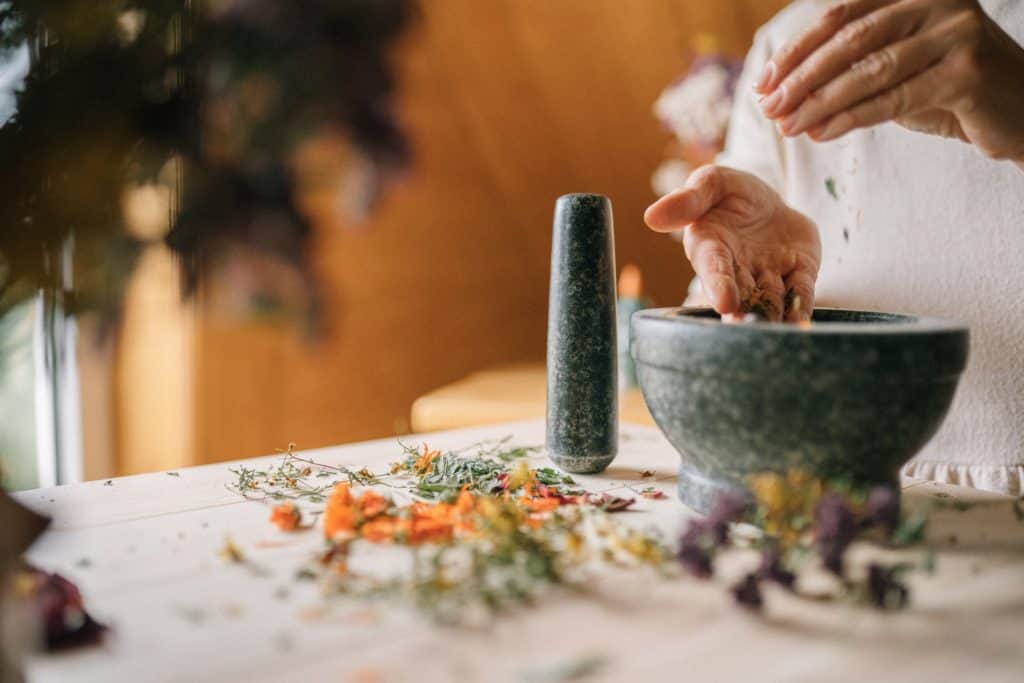
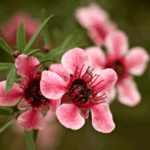

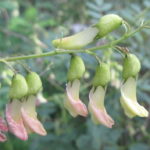

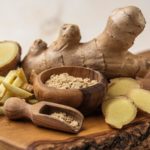
Great information.